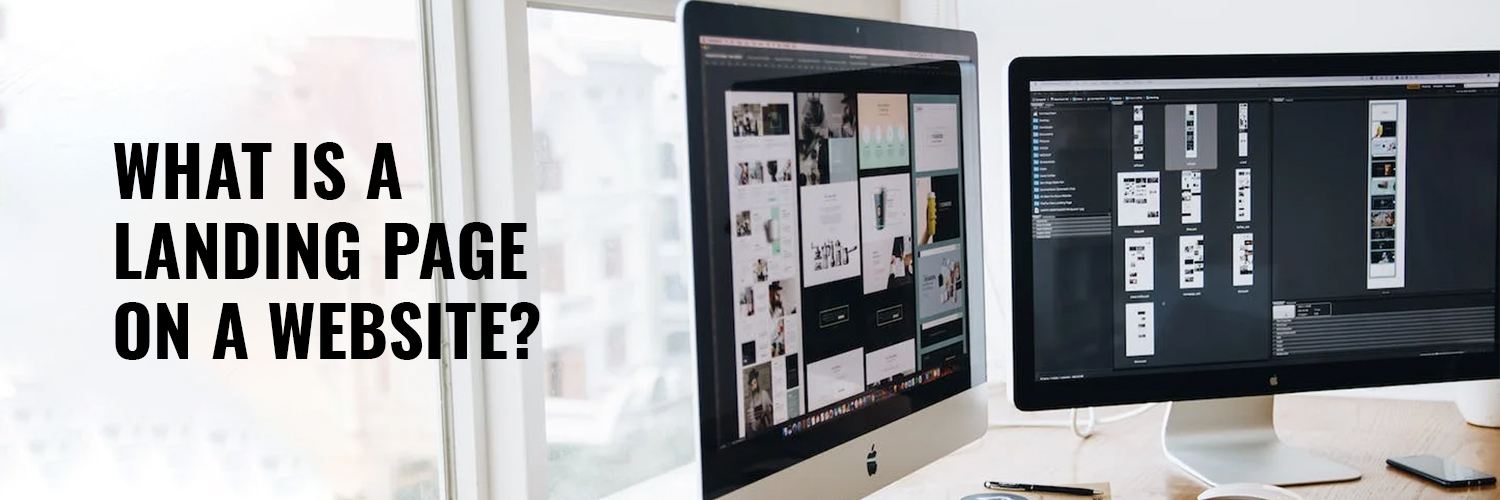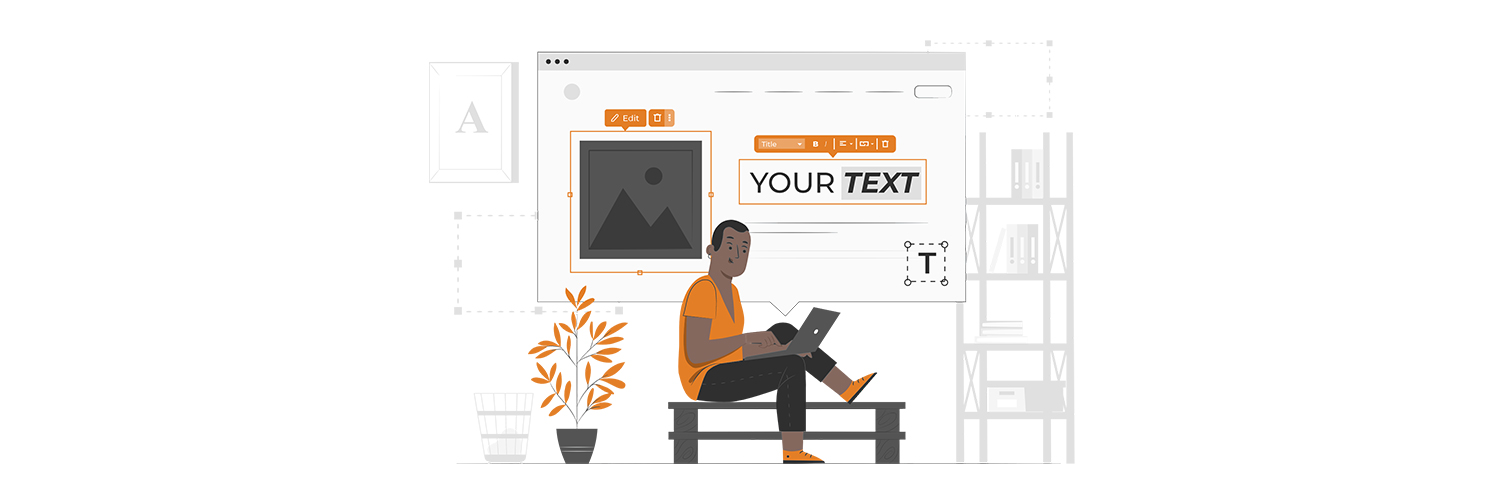
What Is a Landing Page On a Website?
A landing page is the most important part of any website, irrespective of the theme or domain. It is the gateway to the inner pages of your site, making the visitors stay on the site for a long. If the landing page is not convenient, then sorry, you will lose your target audience. You’ll probably come across a new set of concepts as you research digital marketing, SEO, and paid search advertising.
If you haven’t already, you’re going to wonder how landing pages fit into your digital marketing plan. Although you may feel that creating a landing page is easy, it may be, but it is the most vital page that can lead to enough conversion.
The first step in developing a relationship between your business and a potential client is turning visitors into leads. In other words, digital marketers can use landing pages to increase conversions. This article gives you an insight into the landing and building of the best web pages.
What is a Landing Page?

A landing page is the web page that a customer can land on, but in the context of marketing strategy, it’s typically a separate page from your homepage or any other page with a narrow focus. In essence, it’s the next phase before a visitor converts to a client. Your landing page enables you to exchange contact information for trade, unique offers, pieces of information, or transactions.
A good landing page is lead generation based, leading the visitor to other pages. There are two things you need to consider-
- It features a form allowing web owners to collect information in exchange for the offer they want.
- The landing page’s main objective is to turn visitors into leads.
These pages are excellent for marketing campaigns and use tools to link a QR code on printed marketing materials to a specific website. A landing page’s objective is to convert visitors, making it a crucial tool for all marketing initiatives.
Types of Landing Pages

Landing pages are developed to serve two functions- generating leads and directing users to the next page. There are different types of landing pages a web owner can work on. Some of these are-
Lead Generation with Landing Page
This landing page, sometimes called “lead gen” and “lead capture” pages, focuses on gathering lead information. In other words, it gathers data about your clients.
A form that acts as the CTA is a lead capture page’s distinguishing characteristic. It requests user information such as names, email addresses, and phone numbers in exchange for a product or service. More particular information, such as their age or jobs, might be requested. In this manner, you can get in touch with leads to raise their interest in your company.
You can learn about your contacts from the data you gather. Your marketing efforts can therefore be directed at those who fulfill those criteria and are more likely to convert.
Click Through Landing Pages
Call to Action (CTA) buttons focus on click-through landing sites instead of lead-generation pages, which feature forms. Your users are directed to a page where they can perform the desired action by clicking the button.
The user may be redirected to a scheduling page simply by clicking a button that says, “schedule a demo,” or to a checkout page by clicking a button that says, “buy now.” Click-through landing pages that are frequently found on e-commerce sites and other websites generate sales right away. These landing pages incorporate compelling content, such as product specifications or user testimonials, and the CTA button to engage potential consumers.
Other than these, there are other types of landing pages you must know-
Squeeze Page
A squeeze page is used for gathering data, much like a lead-generation page. It is typically used near the top of the sales funnel, unlike a lead-generation page, whose main objective is collecting email addresses to add potential leads to a general mailing list. They have brief, straightforward landing pages with strong headlines and little else.
The reader will know exactly what to expect from the click-through thanks to a clear call to action. In addition to the brief form, there should be a link that directs the reader to the following step and a button that allows them to leave if they choose not to.
Sales Page
Designing a sales page is frequently the most challenging. You are no longer just prospecting for leads with the help of this page. The sales page is used at the bottom of the funnel and is designed to pursue customers and induce them to make a purchase. A certain amount of tact and a thorough comprehension of your client’s demands is used where a sales process is necessary to produce the page, from the copy to the design.
The length of this sales page largely depends on your product and how much you need to mention to convey to your audience why it is valuable.
Infomercial
Unlike squeeze or lead-generation pages, which are distinguished by their features, infomercial landing pages offer viewers an idea about the product, and organization, and the goal is to encourage people to keep scrolling and make a purchase.
How do Landing Pages Work?

- When the potential visitor comes across a call to action or CTA, visit your site’s landing page.
- The individual turns from a visitor to a lead by completing a form.
- The data from the form fields are kept in your leads database.
- You market to them based on the information you have about the contact or lead.
If you use any automation tool, you will see the lead conversion and, once converted, what interactions they have on the site.
An organic lead is more likely to develop into a marketing-qualified lead (MQL) and advance more quickly through the marketing funnel. This keeps your sales staff satisfied and helps demonstrate your marketing efforts’ return on investment (ROI). Web developers must design lead-generation landing pages that can help in the long term.
Benefits of Landing Pages on the Website

Landing pages are distinct from other pages on your website since they concentrate on immediate objectives that will help you achieve your desired results. In addition to raising conversion rates, enhancing paid advertising efforts, and producing fresh audience data, landing pages will further benefit with-
- Boosting the Credibility– A carefully thought-out landing page demonstrates to your clients that you have their best interests at heart. Additionally, they serve as areas where you can include social proof components such as customer reviews of your goods or services. Conversions have been proven to rise with social evidence.
- Strengthen your brand: You’ve already worked hard to develop a digital brand; take advantage of what you’ve discovered. This is the outcome of keeping consistency in your website’s look, feel, style, and copy. There are several advantages to having a strong and distinct brand.
- Creating Leads- Both landing pages can enhance revenue for your company and produce leads. Since landing pages are more specifically targeted, they can emphasize conversion rates more than knowledge and content. Instead, you can emphasize the benefits of your goods and services to increase sales to a specific, pre-existing audience.
- Increase Traffic: With an effective landing page, you can boost website traffic even if lead generation isn’t your primary objective. This will help potential customers become more familiar with your brand and company. Your landing pages can more specifically target organic traffic optimized for SEO, boosting the likelihood that users will convert.
The Need for Landing Page for a Website

A landing page is a part of website marketing that has the potential to increase the lead and overall sales. As a marketing strategy, you can use the landing page to define your product or service that can entice the visitor to learn more. Some of the needs of a landing page for a website are-
PPC Marketing- Since Google evaluates the quality of pay per click (PPC) advertising based on the link page’s relevance, landing pages are specifically dedicated to a given advertisement. A new product can be highlighted on a specific landing page using PPC advertising, which in turn drives sales. Customers looking for a certain price may be drawn by it.
Additionally, even though your brand’s website exists, consumers find an event promotion, and creating a specific landing page may bring visitors who are solely interested in that event.
Lead Magnet- The lead magnet is any useful content posted in the form and accessible only after submitting the form. Visitors become a lead even if they merely give their name and email. Create a landing page just for the lead magnet emphasizing the content, the form, and the keywords.
Pay Attention– The content of a landing page grabs visitors’ attention. Either they respond to the call to action or return to the search results. So, if you have shared a blog post, visitors will further gain interest in reading the same.
Best Practice for a Good Landing Page

When you create a landing page, the page’s main aim is to convert visitors into leads. There are certain elements you need to keep in mind, this includes-
Keep the call-to-action, the headlines, and the primary message above the fold-
In the past, newspapers used a notion called “above the fold,” in which reporters print the most significant headlines and news. This is the screen area that a user can see without scrolling down in digital marketing.
There is a strong likelihood that a user will scan the landing page in its entirety before scrolling down to learn more. To increase the likelihood of a conversion, keep the headlines, the primary message, and the call-to-action (CTA) above the fold.
Utilize just one call to action (CTA)
Every landing page ought to be tailored to achieve just one objective. It can involve downloading an eBook, signing up for a free trial, entering a contest, or registering for a webinar. One CTA button should be placed above the fold because adding more than one CTAs or connection to other sites can divert the viewer’s attention from the main objective.
Mobile Friendly
Since mobile usage has recently increased threefold, building the website keeping mobile users in mind is vital. Regarding web design, ensure the landing page is also mobile friendly. This will help in increasing the traffic and leads.
Final Words
Since we have covered different aspects of landing pages that have the potential to gain leads, it is important to optimize your landing pages accordingly. Hire a leading web development or web design company that create landing pages having the potential to bring more sales to products or service. The aim is to keep visitors hooked to the site.

 SEO SERVICES
SEO SERVICES Digital Marketing
Digital Marketing PPC
PPC
 8146536963
8146536963

